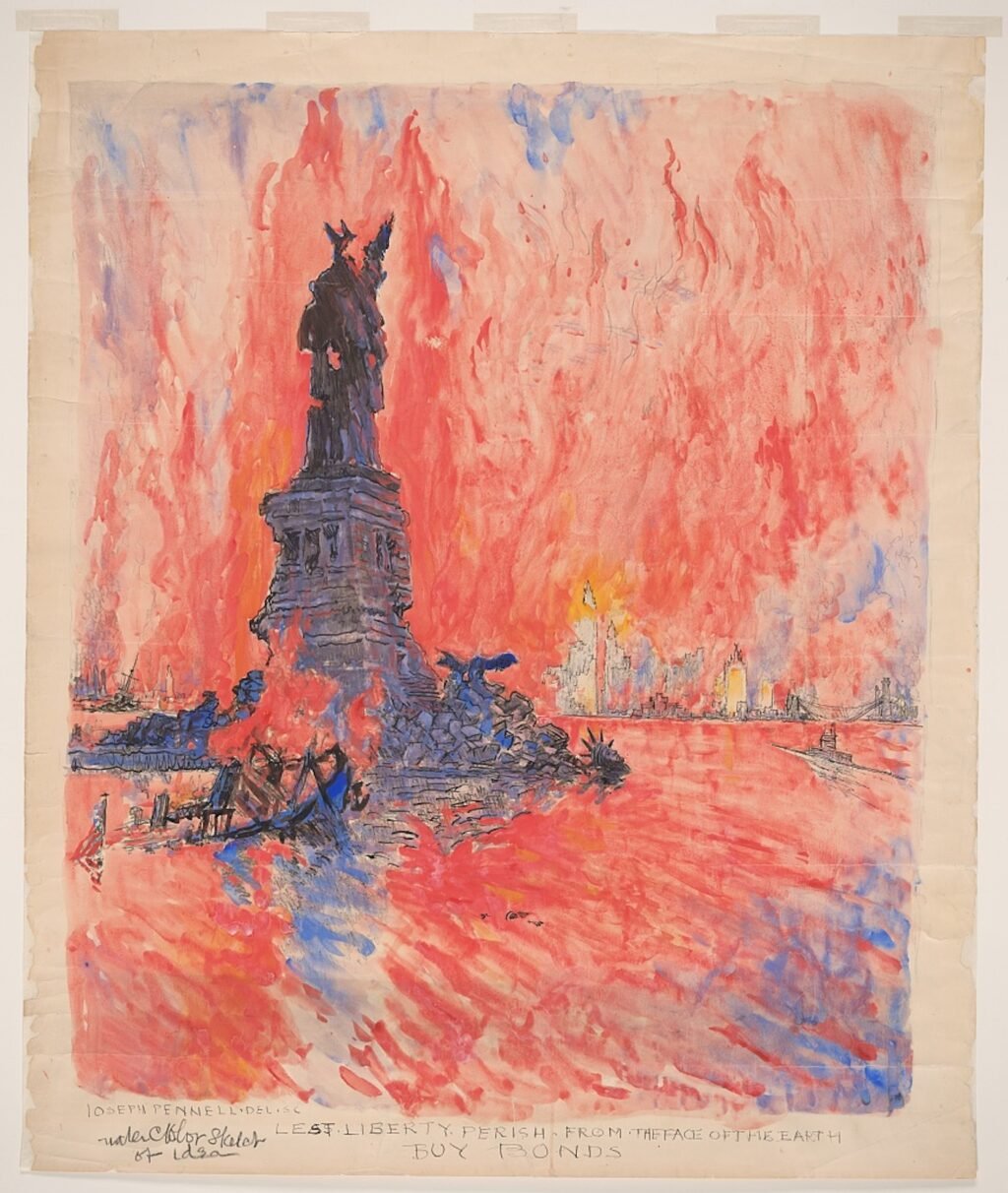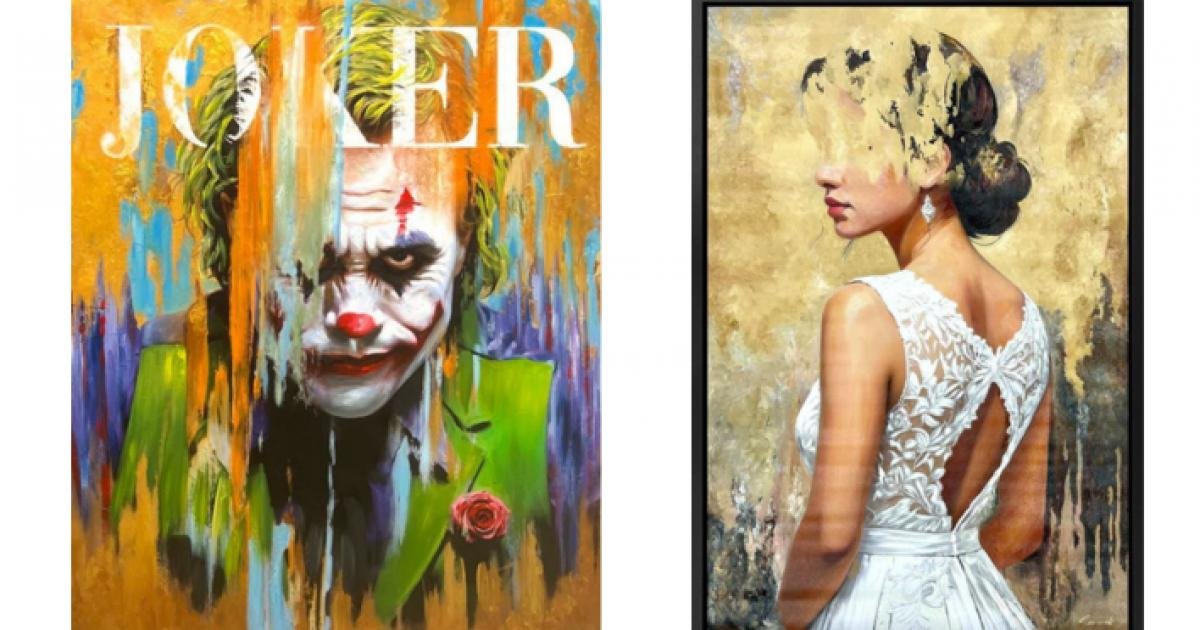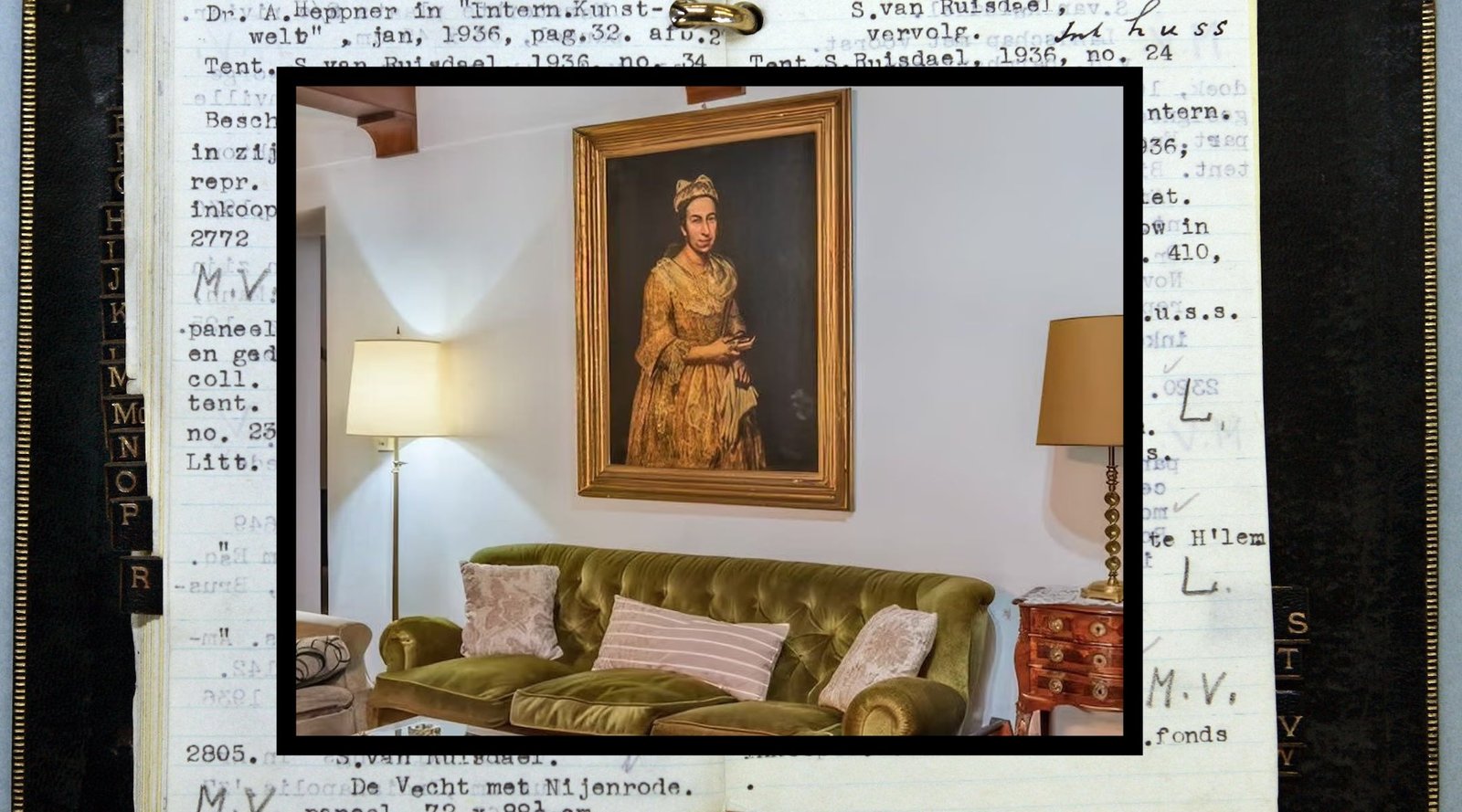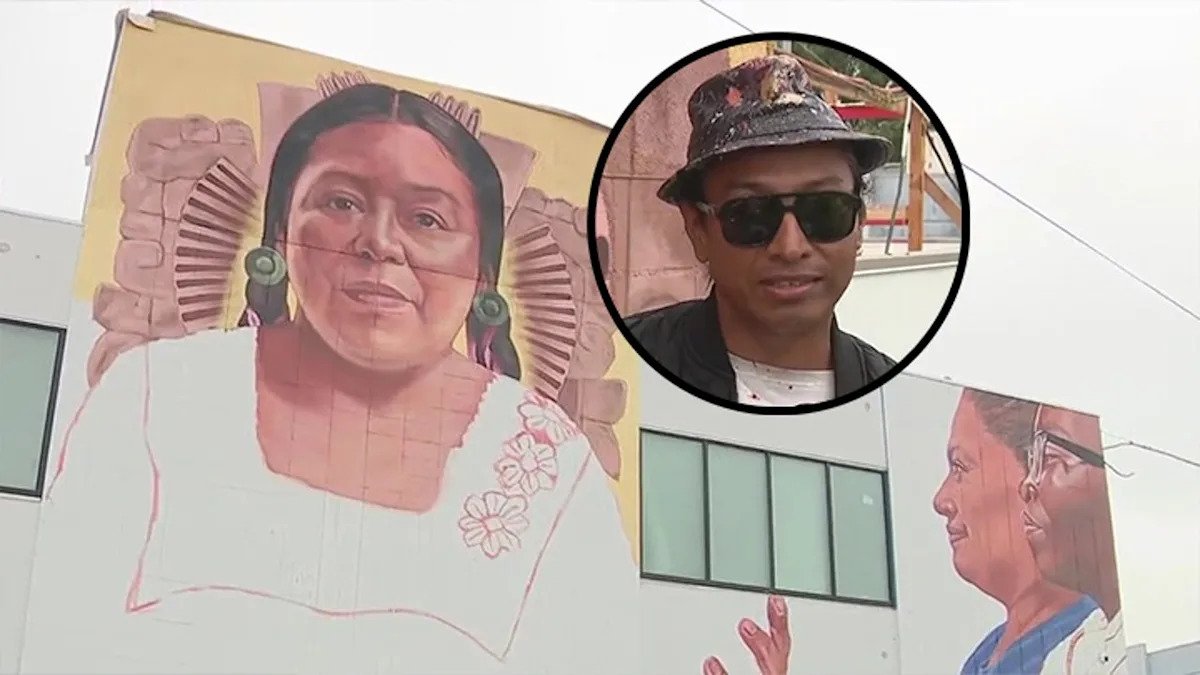Marin Kosut once founded a gallery in an abandoned pay phone shell in Bedford-Stuyvesant, Brooklyn. Now, the writer, sociologist, and curator has released her latest book, Art Monster: On the Impossibility of New York (Columbia University Press, 2024), which began as a scholarly work on the local art scene and mushroomed into an exploration of how aspiring artists in the city endure in the face of late-stage capitalism, gentrification, and the fractured realities created by technology and social media. Once the book was finished, Kosut realized she had to blow it apart by slashing text and injecting voices, memories, opinions, and unanswered questions, subverting typical academic form and structure. “A book about artists shouldn’t be so formulaic,” she explained. “I can do whatever the fuck I want.”
Art Monster weaves personal anecdotes from Kosut’s experiences as a gallerist with ethnographic studies and interviews with artists. Blurring the lines of nonfiction and playing with ethnographic form, Kosut notes in her author’s statement that she uses pseudonyms for the artists she interviewed, “because they live their lives their way, and I narrate it my way.” The result is a simultaneously gritty and seductive collage of what it means to make and experience art in the center of it all. In an interview with Hyperallergic, which took place over Zoom and email, Kosut discussed the process of upending traditional scholarship, the pursuit of a life devoted to art in a place as financially abusive as New York, and how to find satisfaction amid chaos and instability. This conversation has been condensed and edited for clarity.
Hyperallergic: Art Monster takes readers into several NYC galleries — both white-cube and artist-run spaces — and allows us to consider their limitations and advantages. As someone who has run a gallery, I wonder if you see NYC itself as an art gallery? As a space that amplifies the economic and cultural value of things and people? Is this what makes it different from other cities?
Marin Kosut: New York as a container that amplifies the value of things and people is an interesting metaphor. Yes, NYC itself does still have some cache, a kind of aura. If you make things here, regardless of the form, content, or quality, some value is added. I started a gallery, Pay Fauxn, in an abandoned phone booth at a bus stop in Brooklyn [in 2016], and people make galleries in their bathrooms. These spaces are in conversation with the larger mainstream art world and the city itself.
H: It’s hard to live in this city. Can you talk more about why some artists feel they are abandoning part of themselves by leaving, especially when most art communities depend on cheap rent?

MK: By “abandoning themselves” I think you mean “letting go of your identity as a New York artist.” To leave means that you have tried and in some ways failed. Reckoning with the fact that you wanted to succeed in New York, find a job, a community, show work, get reviewed, and make rent, and it didn’t work out. Of course, some people consciously choose to leave because the relentless pace and price of everything is antithetical to making art. If you are hustling all of the time, when do you grow your practice? Leaving can be a form of [exercising] agency, or it can be a failure — it’s subjective.
H: Do other cities really not provide the same opportunities as New York, or is that just a myth that is perpetuated?
MK: People come to New York because it’s an extraordinary, mythic place, a cultural center. And when you’re here and you’re making work, you’re in the orbit of something bigger. A lot of people I hang around with who are painters and writers have been in New York for years. And maybe they go somewhere like Detroit, right? Rent out space and start a gallery. That works and could be satisfying for someone. But New York is [considered to be at] the very top. And sure, you don’t have to define success that way, but some people chase that and don’t want to fail, and then it hurts. It’s a huge cost to come to New York. You have no connections. You’re dragging around debt. You can’t find a place to live. You’re trying to intern for, like, David Zwirner Gallery and all the interns are super super rich.
H: With that in mind, I wonder who this book is for. I found myself hoping this would turn into a self-help book. I wanted you to tell me if I should leave or stay. And that’s not the book.
MK: Oh god, no.

H: Who is your ideal reader? What do you want people to take from this?
MK: My gut response is: I hate this question. Nobody would ask a serious painter, “Who is the ideal viewer of your painting?” That would be laughable. But it is a question every author has to answer if they want to get a book contract. My ideal reader is someone who thinks deeply about art, resists the “like” economy, and prefers to read a book over the infinite scroll, that never-ending vortex of content. Books come to an end.
So that’s my answer. I think it’s a hideous question, but I know that it’s necessary because I’ve had to answer it so many times. When you submit to your agent you have to encompass all of that and it starts so early. Right now I’m writing my first novel and people are already asking, “Who is the audience for this book? Because it is unclear.” And the second thing they say — and I’m sure you’ve heard this, in grad school — is that it needs more interiority. Art Monster has a lot of interiority. I write that I keep screwing up, which is sort of my way of messing with scholarly convention.
H: There’s definitely more interiority than I would expect from a scholarly text. What was the point when you knew that you wanted to explore “messing” with convention?
MK: When I got the contract, it was for a standard scholarly book based on ethnographic interviews. There’d be some theory, I’d say some grand thing about artists and urbanity, and I’d probably offer somebody some answers. I wrote that book and I was done with it. And it was just so gross. I was just like, this is the stupidest, most boring book I’ve ever read. I was reading it and my eyes glazed over. It was super conventional. I had been publishing for years and gotten tenure, and I knew how to do it, but a book about artists shouldn’t be so formulaic. Then I thought, “I can do whatever the fuck I want.” No one’s really stopping me.
H: Why are you so attracted to the idea of blowing up conventional structures and resisting the traditional?
MK: Because it’s fun. There’s something really calm and comforting about thinking: “Okay, I’m in my spot, got my job. There’s food in the fridge.” I think that a sense of routinization and boredom sets in for me. When you blow it up, when you lose your job, or you quit your job, or you leave a city, when you put yourself in circumstances that might be somewhat hostile or difficult, there’s an aliveness to it. That’s what I feel like. I took a chance. I did something. I said “no,” I resisted.

H: You and I both grew up in Rust Belt cities where you’re expected to get a job and get married and be satisfied with what’s in front of you. Small acts of resistance feel especially empowering when you come from such structured, traditional places. Challenging traditional scholarship must have felt good.
MK: It did, and I feel this has been a gateway where I’m like, “I can make anything up. I don’t have to have a linear narrative. I don’t have to have a character that has some sort of growth at the end” — which is so, so American. I didn’t want to give any answers; I just wanted to lean into the confusion and not offer any bomb or any big, great statement. A bit of the chaos in the book, and the way I change voices, or fool with form and create characters — I think I’m unconsciously trying to speak to the chaos of New York. This is just a slice of New York, and it’s cacophonous.
H: For most people who move to New York City, life here is never linear. Unless you’re already at the top. Speaking of being at the top, do you want to talk about money?
MK: I always want to talk about money. I’m obsessed with talking about it. A lot of my successful friends in New York — “successful” in that they have six-figure jobs — have parents who are doctors and lawyers, and so they come with generational wealth behind them and own apartments that they got in grad school. But New York is really tough. It’s ridiculous to come here without some financial safety net. I’m amazed that people do it. How do you make enough money to keep up with rent? You work as an assistant, and you’re supposed to get cost of living raises, right?
H: Yes, but they are never on par with the actual cost of living.
MK: No, and that’s across the country. But it’s all amplified here. Even if you make a good minimum wage here, $40 an hour after taxes and then swipe the subway, like, how are you gonna pay for an $8 container of raspberries? And then visual artists who need a studio space, and also have to pay for paint and linen for canvas … it’s totally untenable.

H: On top of that, we now have this world of social media that pressures you to market yourself in some way that’s turning into another unpaid job.
MK: Yeah, social media is the death of art. It’s the death of quiet time.
H: But is there also danger in romanticizing the cheaper rents in the New York of the past, and ignoring the networking opportunities social media can provide artists?
MK: Well, as time and space have imploded, tech is moving faster, the singularity and AI are coming, and so on, our understanding of the past changes. The 20th century appears dustier and dustier. I think nostalgia is understood by many people as pejorative; you’re a dimwit or a dullard if you are nostalgic. But I am nostalgic for the boring days when you could spend hours doing nothing, and also the slower, more affordable days — the pre-professional days when you didn’t need to have a credit score to rent an apartment or to think about what your relationship to social media and what your identity were going to be. I have to start getting on social media and pimping myself for the book and deciding on my identity. So I’m consciously asking, “How can I subvert this in a way that I’m comfortable with, but also do the PR thing?” That’s just another time suck now. All of this is bad for art.
H: It’s bad for art and artists, and I think it’s bad for New York City.
MK: And then New York becomes, like you said, an art gallery. Obviously, there’s tons of images of New York and the myth of New York is circulating. But social media just adds to the city’s commodification. And so much of it is so uninspiring to me. Like, that’s your New York? Really? That “Cupcake New York” is what Penny Arcade calls it — you’re gonna go to New York for a cupcake? Please. I love Penny, and I quote her a lot because I really like her take on New York and artists: “Artist” has become a sense of style that you can try on like a t-shirt. And I think social media is connected to that.
H: Even as a viewer or reader, there is something different about experiencing art that someone has put their whole lives behind, not just donned as a style or brand.
MK: Yeah. And there’s something at stake when you blow up your life and you move to New York without financial security and try and be a writer or painter or actor. And it’s just really gross to have someone come in and be like, “Oh, I’m an artist, too. I took class, or I doodle on the weekends, or I made this pillow,” and it’s just like, what? But then you kind of sound like you’re snotty or out of touch, or like a gatekeeper. And I’m not. I’m none of that. Well, I might be out of touch and snotty, but I’m not a gatekeeper.
H: Do you think living in New York City has influenced your writing process — the desire to resist convention?
MK: On some level your social and cultural surroundings bleed into your work unconsciously. New York is mean, sucks your time, and backs you into a corner, but it also inspires me in a way that no other cities have. Without conviction you are sunk here. Sometimes I ask myself, “What the fuck am I doing or writing?” and then answer back, “Whatever the fuck I want.”






